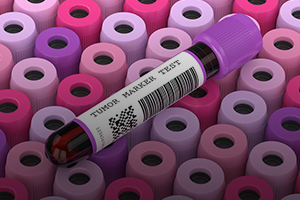Cancer Filter

Isolating cancer by testing a blood sample is challenging. Small numbers of tumor cells are masked among billions of red blood cells (RBCs), so isolating them is literally like finding a needle in a haystack. But a filter has been developed that effectively removes the haystack and makes it easier to separate the cancer cells by trapping larger white blood cells (WBCs) along with tumor cells (which are similar in size).
The filter consists of a series of channels that are lined with antigens to trap WBCs. 3D printing maximizes the surface area available for attracting the cells by allowing channels to be printed in a zigzag pattern. Multiple layers are supported with wax that is removed by heating the filter in a centrifuge to melt the wax and expose the channel walls, after which the antigen layers are added. Once the WBCs are removed from a sample, the smaller RBCs pass through a commercially available filter that traps any remaining WBCs and the cancer cells.
The filter was tested by adding a known number of cancer cells to a 10 ml whole blood sample. Results showed that 90 percent of the tumor cells were captured. Because it requires minimal processing, the new filter also minimized damage to the tumor cells. Prostate, breast and ovarian cancer samples were included in the study, but the method should be applicable to a wide range of cancers.
For information: A. Fatih Sarioglu, Georgia Institute of Technology, Institute for Electronics and Nanotechnology, 791 Atlantic Drive, Atlanta, GA 30332; email: sarioglu@ece.gatech.edu; Web site: https://biomems.gatech.edu/ or https://www.gatech.edu/